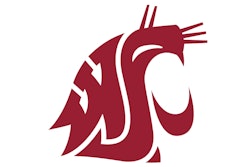Copyright 2014 The Atlanta Journal-Constitution
CINCINNATI --- The bars, restaurants and apartments that have risen along the Ohio River next to the Cincinnati Reds' Great American Ball Park were more than a decade in the making and have cost taxpayers here tens of millions of dollars in subsidies and tax abatements.
And the tab is still open.
The time and public treasure invested in the mixed-use development known as The Banks is a cautionary tale for taxpayers in Cobb County, which has signed on to fund about half of the Atlanta Braves' new $672 million stadium in the Cumberland area.
The Braves say they will privately develop 45 acres around the ballpark into a $400 million mixed-use entertainment district that could include a hotel and office space, housing, retail and an amphitheater, in addition to bars and restaurants --- a development, they say, that will be a year-round destination.
The Cincinnati example differs from Cobb in that local governments, not the team, control the land being developed. But from the outset the intention was the same: to have a private company build an attraction for all seasons.
Yet it still took cash from taxpayers to make that happen --- on what is the most attractive and valuable real estate Cincinnati has to offer.
And not all of the grandiose vision has been realized. Despite the public grants, loans and promised future tax abatements, a boutique hotel and office space have not been built. The development currently consists of 300 apartment units and a dozen bars and restaurants.
Cincinnati officials say Cobb taxpayers should be wary of promises that involve a big payoff from private development without accompanying public investment.
Todd Portune, a Hamilton County commissioner since 2001 who also served three terms on Cincinnati's City Council in the 1990s, said The Banks has been a net positive for downtown.
But Portune said the development is still missing retail shopping it needs for long-term success. In recent years, downtown Cincinnati has lost its mall, has been given notice that Saks Fifth Avenue will leave in 2016, and is under threat that Macy's may also bolt. Yet none of those stores has expressed interest in relocating to The Banks.
When asked what advice he'd give to Cobb County, Portune said taxpayers should brace for more public investment than meets the eye.
"I'd say that whatever promises are being made are probably grossly overstated," Portune said. "Interject a healthy dose of caution, especially in terms of how much you're relying on projections of future development that will stem from building a stadium.
"And in respect to the development ... whatever you build has got to be sustainable." If it's just trendy, he said, "it's going to be attractive to a narrow customer base and you're catering to the most fickle audience you can possibly have."
While mixed-use developments have sprung up around stadiums and arenas in other cities, no one has been able to do what the Braves hope to accomplish: open both at the same time. The Cincinnati Reds' Great American Ball Park, for example, opened in 2003 while The Banks opened in 2011.
The Braves want the bulk of their development to be ready for the first pitch in the new stadium in 2017.
Laura Swadel, a vice president with Atlanta-based Carter, which developed The Banks, said the 2007 recession is to blame for the delays. And she said public money was crucial in making the development "economically viable."
Cobb officials say the public investment at the Braves' site starts and stops with the $300 million being committed to build the ballpark, along with the $1.2 million per year for 30 years of maintenance.
But there's also this: $96.4 million in road improvements throughout the Cumberland area that were planned before the Braves move was announced. While that work is not part of Cobb's commitment to build the stadium, it is necessary to thin traffic congestion, which will only get worse on game nights. Cobb taxpayers will pay more than half that bill.
Cobb Commission Chairman Tim Lee said emphatically last week that the Braves will not receive subsidies from either the county or its development authority for the entertainment district.
"As part of our discussions with the Braves, they wanted to do a stadium and a development, and I said I can help with one but I can't help with both," Lee said. "We won't tell them what to build or how to build it, but they are accountable for that project."
River of public money
A fortune was invested in Cincinnati's riverfront before The Banks could ever become a reality.
It involved more than $300 million in mostly federal money to move a highway, which opened 18 acres of prime riverfront real estate. Then the city and county governments kicked in a combined $128 million to build parking garages that lift the development out of the muddy Ohio River's flood plain.
Most of that isn't comparable to Cobb's situation. But there is a river of public money flowing through The Banks that could be, based on what has occurred with mixed-use developments in other cities.
Cincinnati and Hamilton County provided an $11.5 million grant to Carter and its partners to subsidize the 300 apartment units. In the next phase of construction, Carter will receive a 15-year property tax abatement worth an estimated $12.5 million.
The governments also provided the developer with a $5.5 million loan to finish the interiors of anchor restaurants.
Carter gave nearly half of that loan as a subsidy to Toby Keith's I Love This Bar & Grill, which was sued last year for $121,000 in back rent after less than one year in operation. That lawsuit has since been settled.
Even more controversial was $1 million the city gave to relocate a soul-food restaurant, Mahogany's, from a northern suburb. At the time, the restaurant's owners had just paid off $4,000 in back property taxes and were in the midst of a payment plan to satisfy a $49,000 federal tax lien.
Cincinnati Mayor John Cranley, elected in November after serving on the City Council from 2000-09, said he wouldn't have supported paying restaurants to locate at The Banks. But he called that money "a drop in the bucket" compared to the overall public investment.
Tom Gabelman, an attorney working for Hamilton County, said the governments did get some of their money back. Carter sold the development last year for $79 million --- a 20 percent profit --- and returned $2.5 million to the city and county, which they split.
Gabelman said Carter paid off the $5.5 million loan at the same time.
'The light fantastic'
The Banks is one of fewer than a dozen examples of mixed-use developments being built as a direct result of professional sports stadiums or arenas.
It has been replicated elsewhere: LA Live outside the Staples Center in Los Angeles; Atlantic Yards outside the Barclays Center in Brooklyn; and, most recently, Ballpark Village, which is scheduled to open across the street from Busch Stadium in St. Louis this spring, after years of delay.
The Banks was controversial from the start, especially after Hamilton County commissioners negotiated a generous lease with the Cincinnati Bengals, and the NFL team's Paul Brown Stadium came in nearly $60 million over budget --- all of which was covered by taxpayers.
The football stadium sits on the western edge of Cincinnati's riverfront; the Reds' ballpark on its eastern edge. In between is the mixed-use development, a 40-acre park being built mostly with private donations, and the National Underground Railroad Freedom Center museum that opened in 2004.
The first phase of The Banks construction is next to the Reds' ballpark.
Many of the bars were bustling with parties and revelers on a recent December weeknight. There was a huge crowd inside The Yardhouse on a Wednesday afternoon when Casey Campbell bellied up to the bar.
Campbell wanted to grab a job application and go. But after being told he had to apply online, he settled in and ordered a pint of Hudepohl.
"It's 3:30 and there's 80 people in here," he said. "It's crazy. But it's also very, very new. So time will tell if they can keep it up."
Reds owner Robert Castellini declined to comment about The Banks for this story. But for an idea of how important the development is to the Reds, consider this: Castellini served as chairman for The Banks Steering Committee, which helped select the developer.
Debt service payments on the two stadiums will cost Hamilton County more than $40 million this year and will eventually swell to more than $55 million annually. The county had to sell a public hospital to keep its stadium fund solvent and has reduced the amount of promised property tax rollbacks in recent years.
Dusty Rhodes, Hamilton County's auditor since 1990, said building The Banks is a major source of the county's financial problems because it siphoned off money that should have been dedicated to the stadiums.
"They diverted millions ... spent tons of money on legal fees --- they were tripping the light fantastic," Rhodes said. "If they hadn't spent money on those other things, they'd be fine now. They said it would jump-start a reclamation of the riverfront. The only thing they jump-started was demands for more subsidy.
"But every politician wants to leave a monument."
Swadel, the vice president with Carter, countered that the development's success can be measured in numbers: more than 2,500 construction jobs since 2008; 2,400 jobs and $81 million in earnings from businesses located at The Banks; and $95 million in private investment.
She also said there is a waiting list for the apartments, and the 77,000 square feet of retail space is 92 percent leased.
The public subsidies go with the territory, said Phil Beck, the city's project executive for The Banks.
"You have to have a certain amount of public investment, and then the private investment catches up," Beck said. When told of the proposed cost and timeline for the Braves ballpark and development, Beck said: "They're building it fast and paying a premium."
Daniel Scott, who lived in Atlanta for six years while attending Morehouse College, moved to an apartment at The Banks, sight unseen, three months ago. The 26-year-old said his move was rushed, so he decided on the riverfront development because he wanted to be downtown.
"I wanted to have something where I can walk downstairs, walk to a club, and walk back upstairs," Scott said. "It's a noisy place, but I knew what I was moving into. I'm paying a premium to live here, but I'm happy. I have a view of the river and I can see the Reds stadium out the window. It's an attraction --- I'll be at a lot of games."
Coming Monday
Braves executives are touring sites around the country as they prepare for their new stadium in Cobb County. Find out what they gleaned from their visit to St. Louis, including the under-construction Ballpark Village.
Follow our complete continuing coverage of the Braves' move at www.myajc.com/bravesmove.
Terms and Conditions Privacy Policy



































